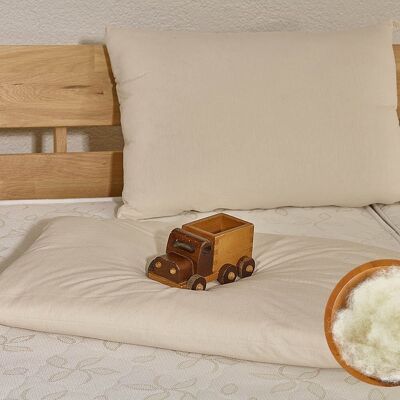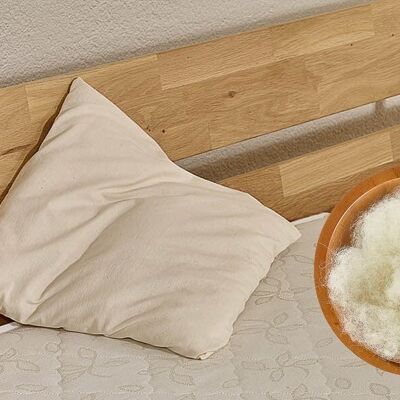


Kapok fiber After harvesting, the kapok fiber does not undergo any further treatment, no washing and no chemical "refining". Rather, it is added in its completely natural form to pillows and mattresses. It is characterized as a very good filling material with excellent properties: the fiber is hollow and extremely light. Because of the large amount of air it contains, it insulates well and is pleasantly warm. Kapok fibers have a silky-smooth surface, which is why they do not felt or clump like wool or cotton. Thanks to a natural wax coating, the kapok fiber is breathable and moisture is quickly passed on, but not absorbed or retained. This means that the warm, humid bacterial climate that is so feared in mattresses cannot develop. Origin The kapok fiber comes from the kapok tree, also known as the wool tree, which grows up to 50 meters tall and is now found mainly in the tropical zones of Asia. It grows wild and is not grown in plantations, so no pesticides or fertilizers are used. At harvest time, the ripe capsules are picked by hand, opened and dried in the sun. The light, airy fibres are then separated from the seeds in a blower chamber. The silky, shiny hairs, which can be up to 4 cm long, are covered with a fine layer of wax and are therefore water-repellent and cannot be spun.















